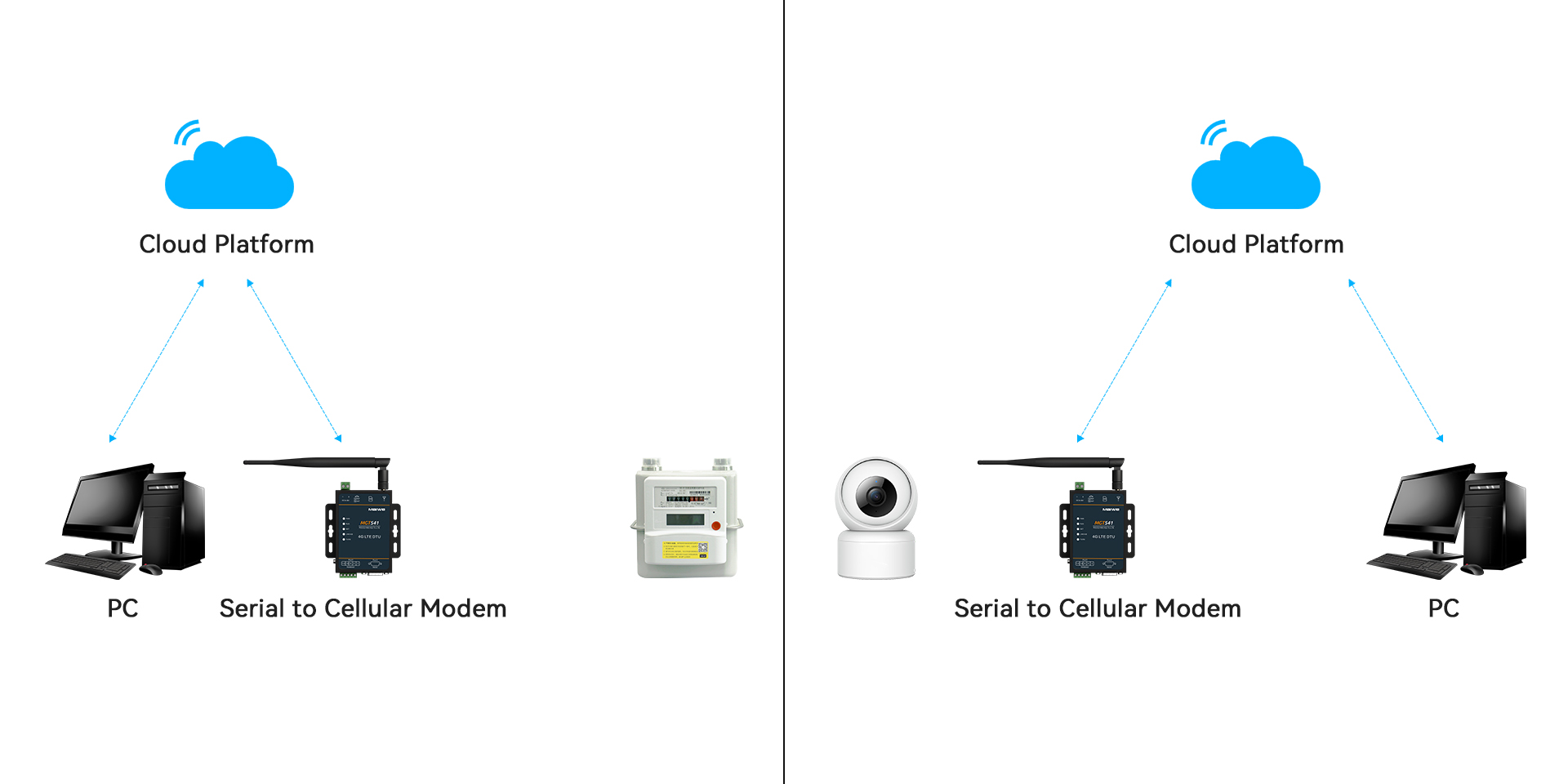Serial to Cellular Modem: A DTU in Industrial Automation
In the world of factories and remote monitoring systems, making sure different machines can talk to each other is super important. That's where something called a Data Terminal Unit (DTU) comes in. Sometimes, you might hear it called a Serial to Cellular Modem. Basically, it's like a translator between legacy industrial equipment and modern communication networks. In this article, we're going to take a closer look at the serial to cellular modems, what they do, and where they're used.
What Is Serial to Cellular Modem
What is a DTU? Well, in simple terms, we think of it as a translator for data. When information needs to travel between two points, like from a sensor in a factory to a control center, there's a little device called a DTU that helps make that happen. Its main job is to take the data, change its format if needed, and make sure it gets to where it needs to go safely and accurately. In wireless communication, a DTU specifically refers to the part that sends data over things like wireless networks (like GPRS, WiFi 3G, or 4G). So, whether it's in a factory or out in the field, DTUs are essential for keeping information flowing smoothly.
A serial to cellular modem can be considered a type of DTU (Data Terminal Unit) commonly used in industrial automation and remote monitoring systems. These modems serve the purpose of converting serial data from industrial equipment into a format suitable for transmission over cellular networks, thereby enabling remote monitoring, control, and data acquisition. In addition to supporting the transparent transmission of data, data can also be parsed according to different industrial protocols As such, serial to cellular modems fulfill the core functionalities of DTUs by facilitating data communication between industrial devices and central control systems.
The serial to cellular modem is usually used to connect sensors, instrumentation and other field terminal devices to transmit data to cloud platform or remote server to realize data acquisition, monitoring and control etc. Maiwe has a variety of serial to cellular models for selection.
How Does Serial to Cellular Modem Work
A serial to cellular modem makes it easy for your device to connect to the cellular network and send data back and forth. Here's how it works: It links your device's serial port (like RS485/RS232/RS422) to the modem. Then, it uses the mobile network to wirelessly send your device's data to a cloud platform or remote system. And guess what? That cloud or remote system can also send data or commands back to the modem, which then passes it on to your device. This means your device can talk to the cloud or remote system, allowing for things like remote monitoring, analyzing data, and getting alerts if something goes wrong.
How to Use Serial to Cellular Modem
The primary job of a serial to cellular modem is to send data from remote equipment back to the central control center through wireless means. But to make this happen, you need a complete system in place. This system includes the serial to cellular modem itself, the serial terminal equipment, the mobile network, and the backend center. At the front end, the serial to cellular modem connects to the terminal equipment through interfaces like RS232, RS422 or RS485.
However, just having the serial to cellular modem isn't enough for cellular data transmission; you also need the cooperation of backend software. Once everything is connected, data can flow wirelessly bidirectionally between the front-end equipment and the backend center via the serial to cellular modem. And with the latest generation of serial to cellular modems, they've evolved to handle various tasks like pure data acquisition, multimedia display, and data processing.

They can work with different IP terminals, port numbers, and baud rates for serial ports. And to make things even more convenient, serial to cellular modems support parameter configuration, storing these settings in internal memory. So, once you power it on, the serial to cellular modem automatically gets to work according to your predefined settings.
Applications of Serial to Cellular Modem
The serial to cellular modem has been widely used in electric power, environmental protection, logistics, hydrology, meteorology and other industry sectors. Although the application of different industries, but the application of the principle is the same. Most of the serial to cellular modem and industry equipment is connected, such as PLC, microcontroller and other automation products, and then establish a wireless communication connection with the background. In today's increasingly developing Internet, the use of DTU is also more and more extensive. It provides help for the information and industrial integration between various industries and industries. It is also gradually developed into the core technology of Internet of Things application.

Conclusion
In short, the Serial to Cellular Modem, or DTU, is like a magic wand for industrial communication. It connects faraway machines to control centers wirelessly, making data handling a breeze. As technology continues to evolve, so too will the role of DTUs, empowering industries to embrace innovation and stay ahead in an ever-changing landscape. With its adaptability and myriad functionalities, the DTU remains at the forefront of industrial communication solutions, driving progress and enabling connectivity across diverse applications and environments.





















 Pre
Pre
 Back to list
Back to list